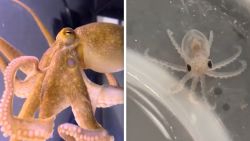An unusual object detected streaking across the sky last month was a comet that originated outside our solar system, observations have confirmed, becoming only the second observed interstellar object to cross into our solar system.
It has been named 2I/Borisov by the International Astronomical Union’s Minor Planet Center. And it’s anywhere between 1.2 and 10 miles in diameter, Karen Meech and her colleagues at the University of Hawaii say.
Observations by NASA’s Jet Propulsion Laboratory Solar System Dynamics Group have supported that this comet has the most hyperbolic orbit out of the thousands of known comets.
Wonders of the universe
“The orbit is now sufficiently well known, and the object is unambiguously interstellar in origin,” according to a release by the IAU, which has designated the object as the second interstellar object, 2I.
It first was spotted on August 30, almost two years after the first interstellar visitor detected in our solar system, known as ‘Oumuamua, was found in October 2017. Interstellar means that the object originated outside our solar system.
Gennady Borisov spotted a new comet while at the MARGO observatory in Crimea. The amateur astronomer used a 0.65-meter telescope he built and saw something that resembled a comet with a short tail.
After this initial observation, the Scout system at NASA’s Jet Propulsion Laboratory also flagged the object as possibly originating outside our solar system. Scout assesses recently found objects from the Minor Planet Center for hazards and potential trajectories.
Follow-up observations of the comet were made, including by Davide Farnocchia at NASA’s Center for Near-Earth Object Studies and by the European Space Agency’s Near-Earth Object Coordination Center.
And we’ll get a chance to know the comet better soon. It’s due to enter the inner part of our solar system on October 26. To look at it right now through telescopes from Earth, the comet appears close to the sun. It will be visible through professional telescopes for months.
The comet is making its way toward our sun and is now 260 million miles away. It will get closest to Earth – 190 million miles – on December 8.
“The comet’s current velocity is high, about 93,000 mph, which is well above the typical velocities of objects orbiting the Sun at that distance,” Farnocchia said. “The high velocity indicates not only that the object likely originated outside our solar system but also that it will leave and head back to interstellar space.”
The object was designated as a comet because it appears fuzzy. Comets tend to look fuzzy because they’re icy and release dust and particles as they heat up on approach to the sun.
‘Oumuamua only had a quick visit with us in 2017. This comet’s stay should be a bit longer.
“The object will peak in brightness in mid-December and continue to be observable with moderate-size telescopes until April 2020,” Farnocchia said. “After that, it will only be observable with larger professional telescopes through October 2020.”
Future observations will shed more light on its size, rotation and path.
A new detection about our visitor
This week, astronomers announced that they were able to detect gas molecules from the interstellar comet. That’s the first instance of making a detection of this kind of material in an object that originated outside of our solar system.
This detection could help scientists understand the makeup of these objects compared to those in our solar system.
“For the first time we are able to accurately measure what an interstellar visitor is made of, and compare it with our own Solar system,” said Alan Fitzsimmons, professor at Queen’s University Belfast’s Astrophysics Research Center.
Fitzsimmons and an international team of researchers used the the William Herschel Telescope on La Palma in the Canary Islands to make the detection last Friday. They were able to spot it low in the morning sky and measure the comet’s light.
“A spectrum allows us to detect individual types of gas by their spectral fingerprints. We received the data at midday and by 5 pm that evening we knew we had successfully detected gas for the first time,” Fitzsimmons said.
The gas they detected is called cyanogen. It’s common in comets, but would be toxic if we inhaled it. The gas is made of carbon and nitrogen atoms bonded together.
The new detections show that the comet looks very similar to comets in our own solar system.
“The next year is going to be extremely exciting, as we will be able to follow 2I’s evolution as it zooms through our Solar System,” said Oliver Hainaut at the European Southern Observatory.

















































































